Writing a product description is a lot like answering a simple support question.
If you ever asked a salesperson in a store about how the product works, and the answer provided is, “it’s green”… that’s the exact same feeling people get from some eCommerce product descriptions.
Thankfully, we’ll be here to guide you through the dos and don’ts of NOT getting your prospects to feel that way. And instead – making that sale!
Tips to Write a Product Description
More on Writing Product Descriptions
Wrapping Up
By the end of this article, you’ll not only be able to churn out product descriptions that drive conversions – you might actually end up a stronger copywriter than before!
Realistically – it takes more than good writing to convert a sale. You still need a functional online store, a decent product, and some traffic.
But a product description still holds tremendous power. It’s your final sales pitch; the difference between your visitor whipping out their credit card, or clicking away.
If you master the art of writing product descriptions, here’s what can happen:
It’s the place where the magic happens. As a business owner, good product descriptions = higher Returns on Investment (ROI).
New to eCommerce?
Check out our comparison of the best eCommerce platforms on the market.
Here are our top 8 tips for writing great product descriptions that ultimately sell.
Whether you’re a marketer, salesperson or business owner – you definitely need to know who you’re selling to.
If you know your audience well enough; how they think and behave – you’ll be able to address any concerns they might have through your words.
To get into their heads, here’s a list of questions you can ask yourself:
Putting yourself in their shoes can help you understand what details to emphasize in your product description.
Let’s use Dyson’s cordless vacuum cleaners as an example. We can ask:
Now, channel all that into a product description – what have you got?
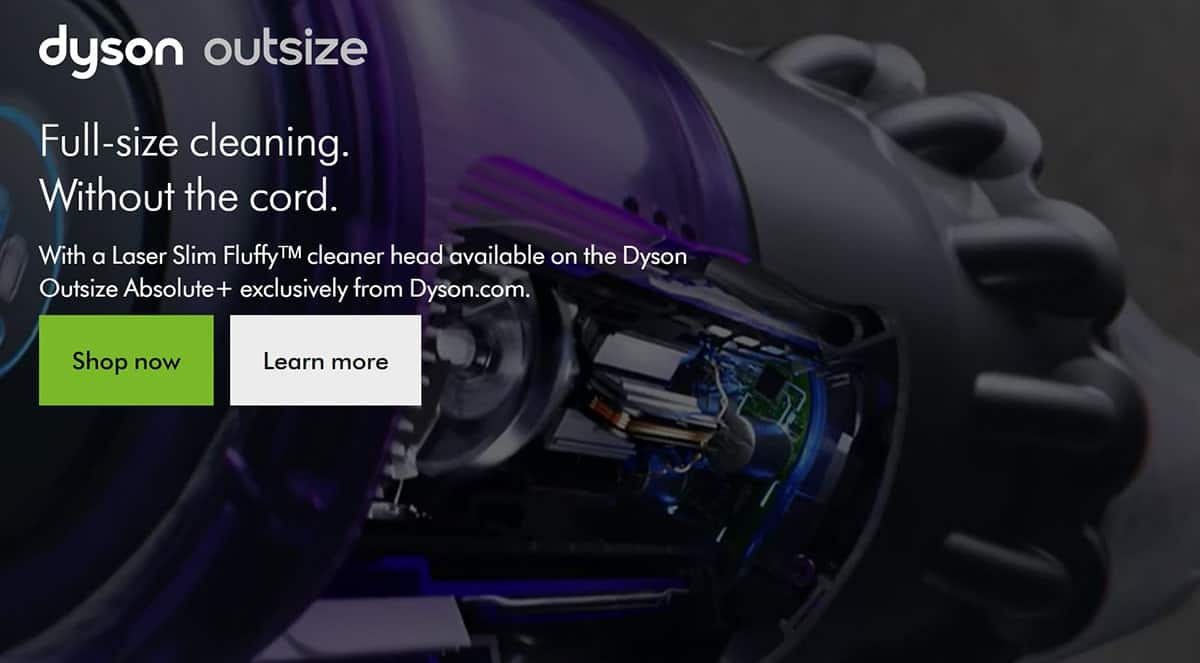
The above description is simple and gets the point across that the Dyson is as powerful as any “full-sized” vacuum cleaner, but most importantly, the user is not lugging a giant machine around with an annoying cord in the way.
It front-loads the most appealing feature first. And their audience is sure to love it.
When it comes to great storytelling, it would be a surprise not to see the Nike brand mentioned anywhere. After all, these were the guys that changed the shoe game for decades.
And it was never really about the shoes, it was about empowering people to achieve greatness – hence the slogan “Just Do It”. After putting on a set of Air Jordan’s back then, everyone feels like an athlete that can accomplish great feats too.
This product description below pays homage and steals a bit of tip #1 in terms of appealing to their target audience: female basketballers who wanted Air Jordans, to be like Michael Jordan.
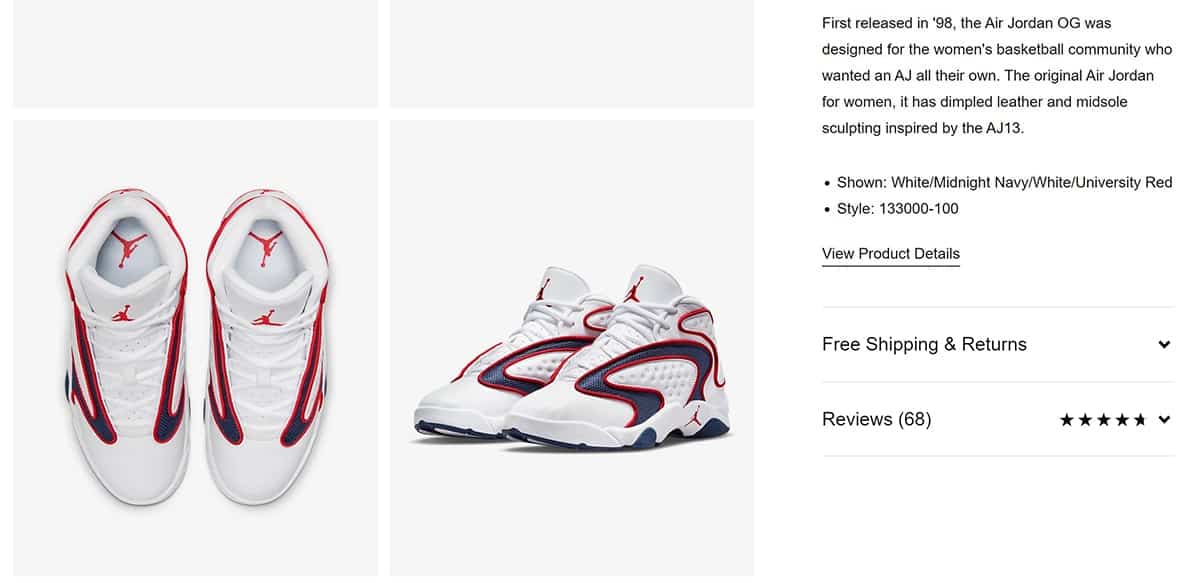
How do you think their audience would feel when they read something so nostalgic?
The beauty about writing product descriptions like this is that it can remain in our brain for a very long period of time because it doesn’t tug the brain, but the heart as well – and that’s great storytelling.
Tell a story. Appeal to their emotions and aspirations.
In today’s competitive e-Commerce scene, it’s incredibly important to differentiate yourself with the product – or at the very least in the way you’re marketing it.
Take an everyday product like men’s wallets:
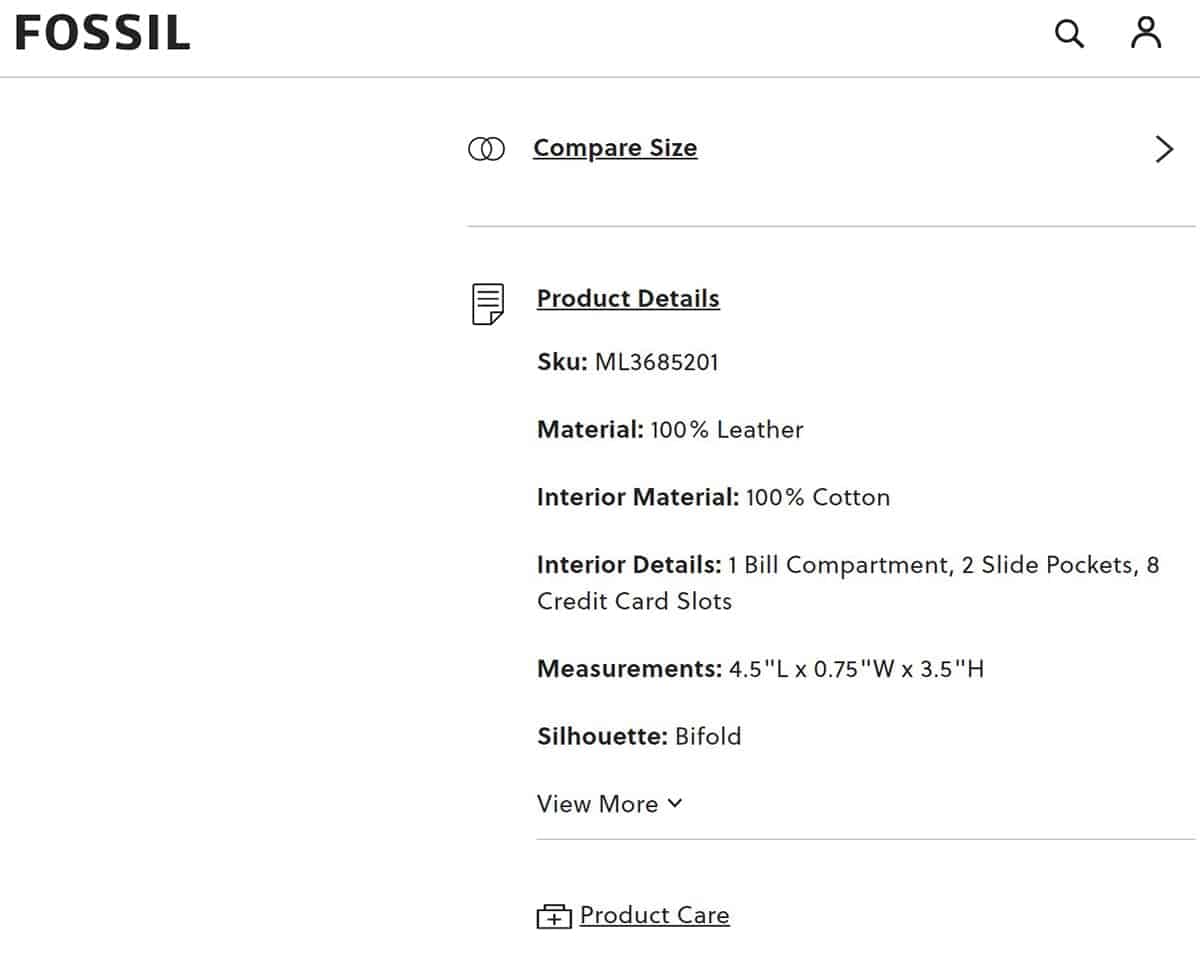
There’s not much to talk about because it’s a wallet right? Just needs dimensions, material composition and perhaps how many slots to fit my 5 non-existent credit cards. WRONG. Any guy with a wallet does tend to have a lopsided rear-end due to their wallets, and that’s bothersome.
Combining the knowledge of knowing your customer and what makes your product more unique than someone else’s – the likelihood is that you’ll be chosen.
See how Bellroy did it below:
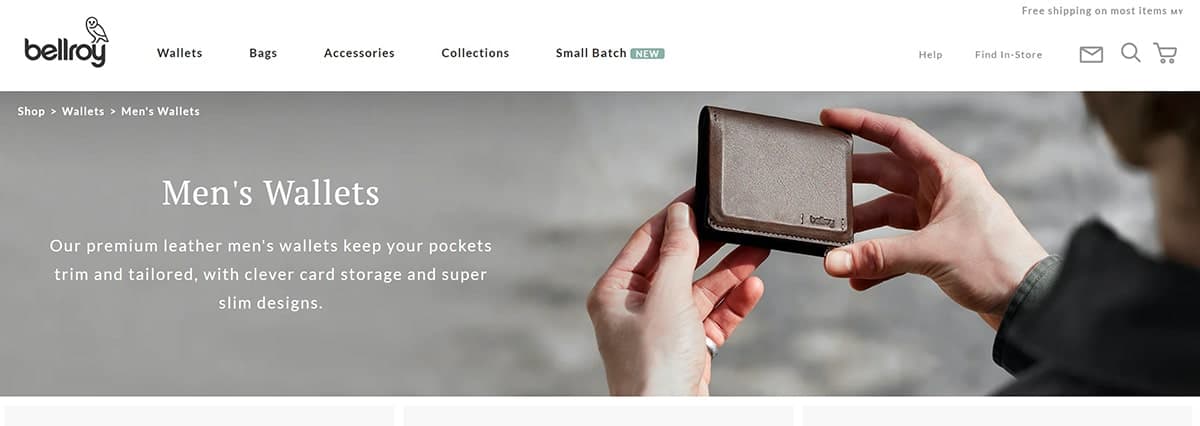
Always remind your audience why you’re better, especially if your product has a unique selling proposition.
Having said that, we’d also want to be as believable as possible. Make sure you don’t make untrue or ridiculous claims – or you’ll lose trust.
For example, this Mindvalley “product” description has had the Internet a little divided:
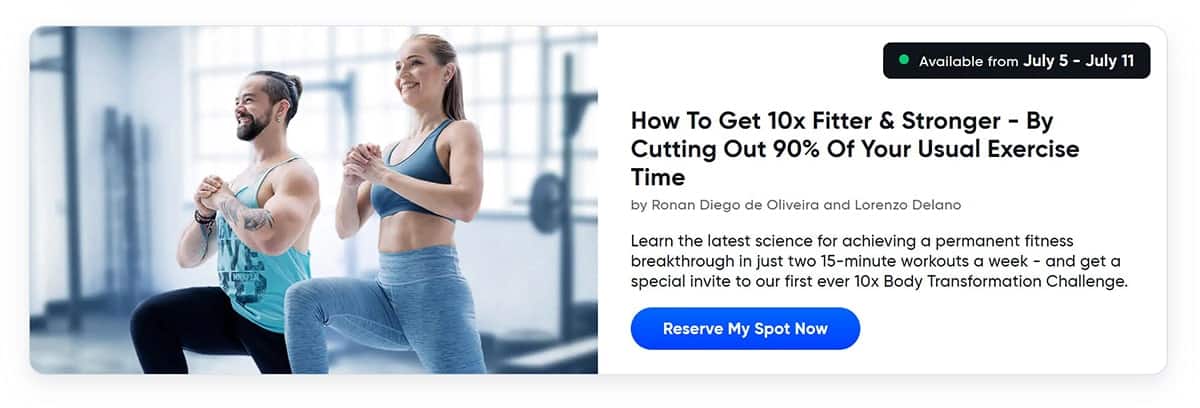
By no means am I giving any flak here as I’ve personally enrolled in this and have seen some results. However, as I’m not the fittest person in the world, I definitely take more than just 30 minutes per week to complete their workout regime.
The key takeaway here is to make sure that you’re justifying your statements with facts and not opinions. People may or may not call you out, but it is quite risky to put yourself in a compromising position if you say that the product is “guaranteed” to do something but it doesn’t. The product needs to be properly backed and fact-checked.
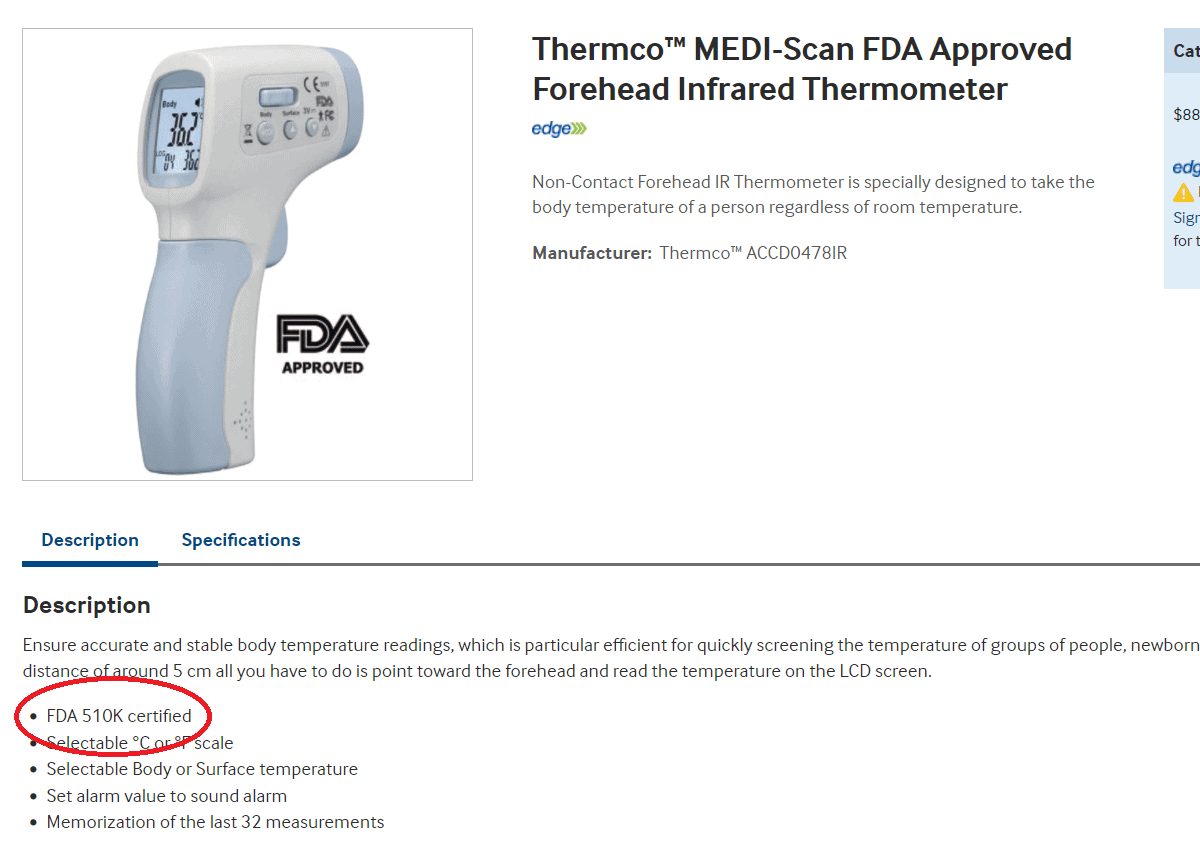
With the most recent increase in demand for health supplies such as thermometers and face masks, consumers will look out if these products are FDA approved.
If you have it, make sure it is shown to convey legitimacy and consumer confidence.
My personal favourite mantra is that “Less is More”.
People think that you need 10 features and benefits all written out to convince someone to buy. We’ve seen an example above like Bellroy which cuts to the user pain point incredibly fast.
On the other hand, you have all the products from Amazon that allows you to list as many features or bullet points as you want on it.
Sometimes, you don’t have to use it all. Take Apple AirTag for example.
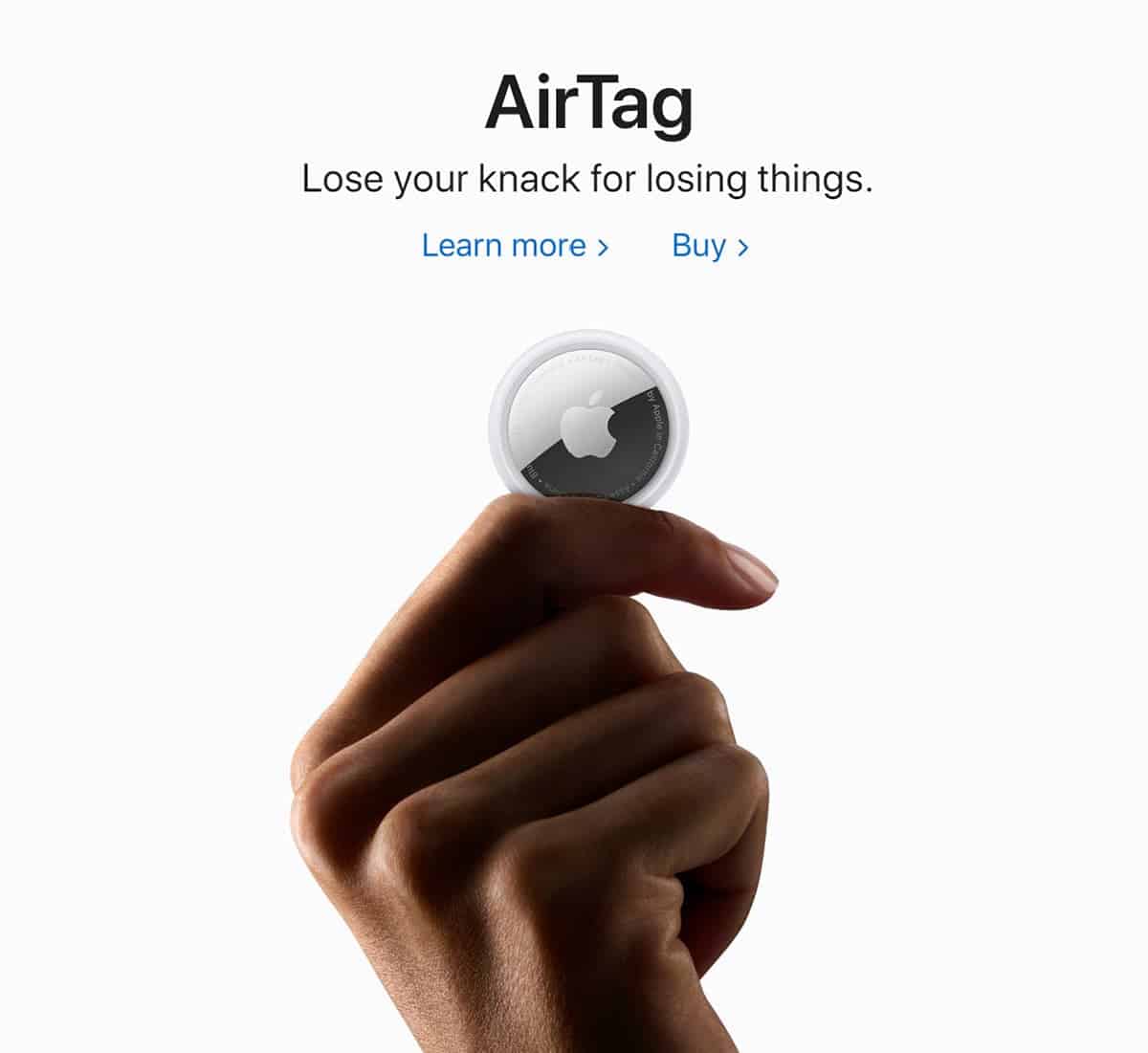
Truth be told, this is the first time I’m seeing this product from Apple and despite that, it’s fairly understandable what this product does when it says “Lose your knack for losing things”.
That is clever copywriting at work.
Clicking in will then reveal the full product description and list of features – which they also do great (which leads to my next point…)
The whole point of formatting? Make it super easy for the reader to understand what your product does, and the value it provides, in a mere matter of seconds!
Don’t use 20 bullet points just because you can. Don’t go crazy with images without any context.
Instead, aim to strike a balance between copy, bullets, icons, photos and headers. Design with the intent of conveying your message across as clearly as possible.
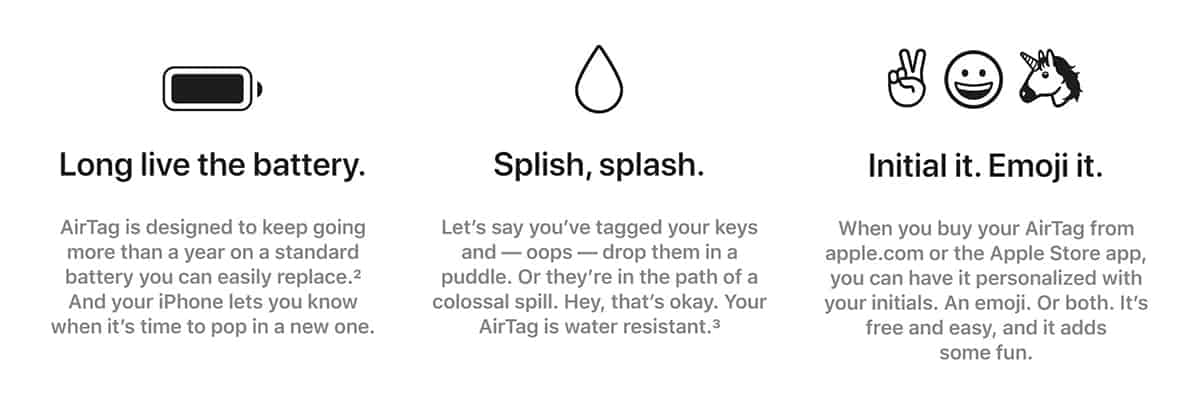
Without reading into each paragraph, you can instantly guess that the three main benefits are long battery life, water resistance and some kind of personalization on the tag itself. These are well-formatted product descriptions.
Sure – If you’re selling on an existing marketplace like Amazon, you might not have as much flexibility with the format of your product description. However, you can still break large paragraphs into shorter, more scannable ones.
Pro tip: From my own observations, optimum readability is between 9 and 12 words per line of text. Longer than that, a reader can get lost or misread.
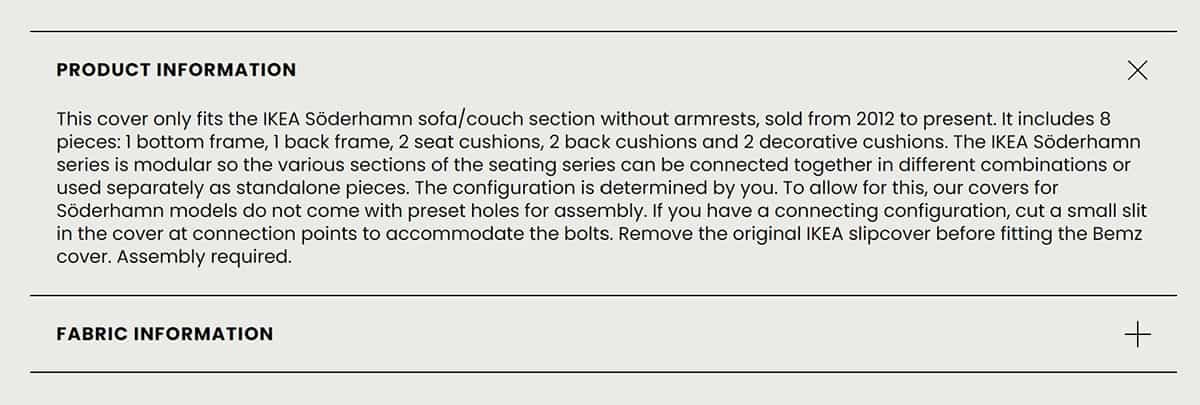
Many, many vendors out there just want to get a product up quickly. And many just end up copying a supplier’s or competitor’s product listing.
In SEO however, duplicate content is a big no-no as that’s outright plagiarism and you may get penalised by the big ‘G’ (for Google), which means less visitors to your site.
Having said that, it doesn’t mean that you can’t check out the competition to see where you might be lacking. Better yet, where might the competitor be lacking that you can step in?
Take these two fast food giants most iconic burgers:
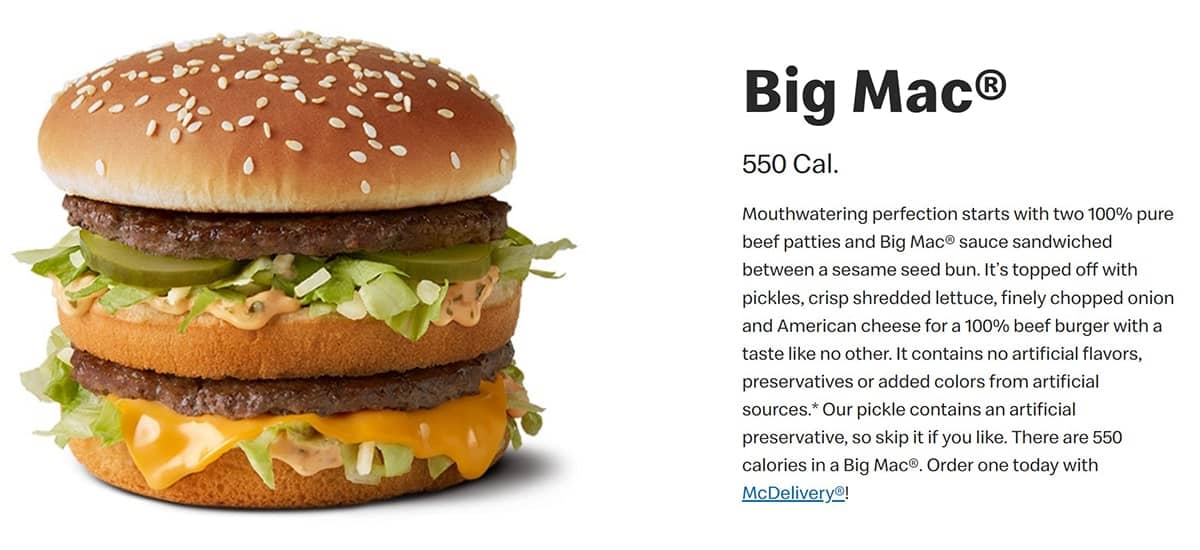
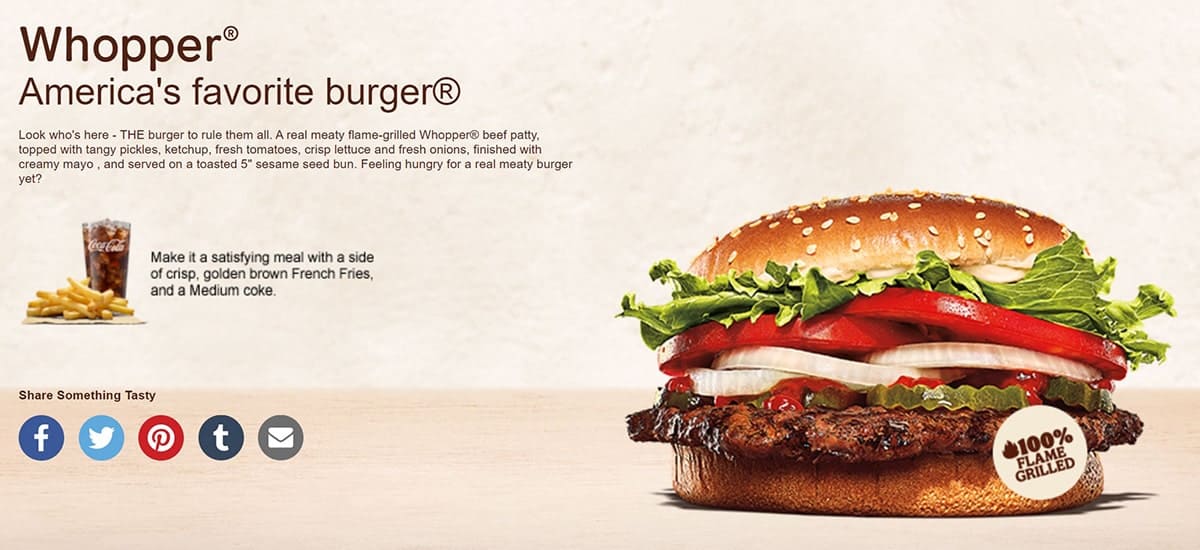
Without reading too much into this, we can tell that even though both of them are burgers with similar ingredients, the product descriptions have positioned them to be very different.
McDonalds seems to be targeting the health conscious, while Burger King seems to be targeting any patriotic American.
Have you ever been about to buy a product online – then get thrown off by a confusing sentence?
Perhaps the description is speckled with typos or unclear phrases. Perhaps the details written in the text contradicts the images.
Whatever form they take – typos and inconsistencies can confuse or distract a user from hitting ‘Buy’.
If your descriptions are poorly written, they may even raise more questions than answers – which is another hurdle in the way of the sale!
So, make sure you review and edit your descriptions. Don’t be afraid to come back to edit them after a couple of days. It can be helpful to have a grammar checker tool and perhaps a native speaker of whatever language you’re writing in, to ensure you’re communicating the right message across.
You’re probably wondering: are there words that we should be using to make our product descriptions more persuasive?
And whoever says there are needs to make sure to back that up with some proper research and study, so do take these next few paragraphs with a grain of salt.
In my years of writing and reading, there are a few words that resonate with me personally the most.
My Top 3 “powerful” words (that also appear in this article by Entrepreneur) are “You”, “Easy” and “Guarantee”.
What I’ve learned about copywriting over the years is that:
What I’ve learned about poor word choices typically trigger your “spam” filters:
Do what you will with these, but every product works differently and if there was one tip to take away: “Knowing Your Customer Inside Out” would trump all else.
Truth be told, everyone has their own specialty and if writing isn’t yours – fret not.
Here are two secret shortcuts to writing great product descriptions many people are using but won’t tell you about:
Totally nothing wrong here because if you can’t do it, pay someone else to do it. Be it Fiverr, Upwork or Freelancer.com – these sites are great for getting an experienced professional to write product descriptions for you at a budget of your choosing.
You may have to try a few out to find someone that matches everything you need.
You might not know how to write product descriptions, but you should at least know what they are supposed to do in terms of performance.
Run A/B tests using Google Optimize or Visual Web Optimizer to see what kind of changes made to product descriptions produce what kind of outcomes.
At the end of the day, it does come back full circle. While we can talk about maximizing conversions and ROI, the product description should address every question a user might have with regards to purchasing and using that product.
If you’ve cleared their doubts and captured their imagination – they’re much more likely to see the value in your product. Which means you may just convert another happy customer!
What’s next? If you’re wondering whether you’re pricing your products effectively – check out our guide on how to price your products.
Chuck Lau is the Operations dude for an Australian e-Commerce store by day, and a content writer by night. He currently owns 3 cats and hopes to create a cat sanctuary one day with his life partner.